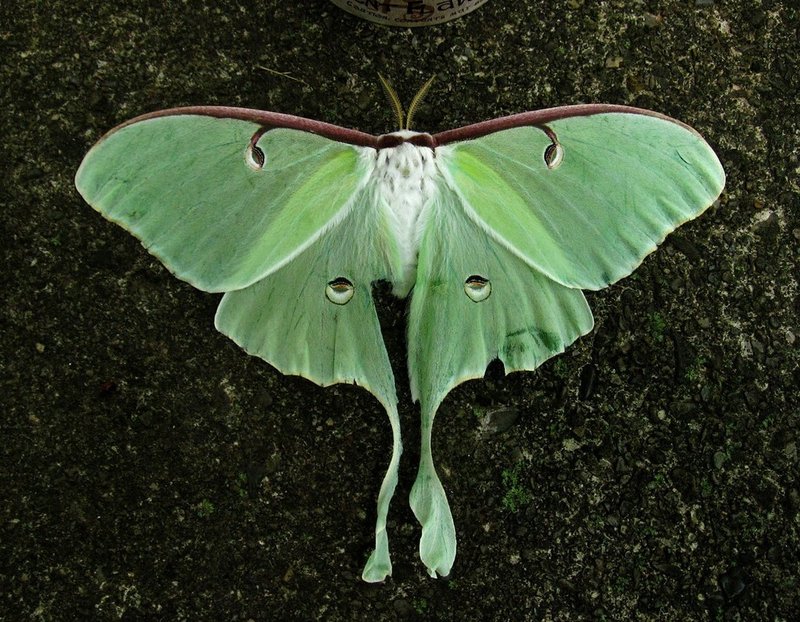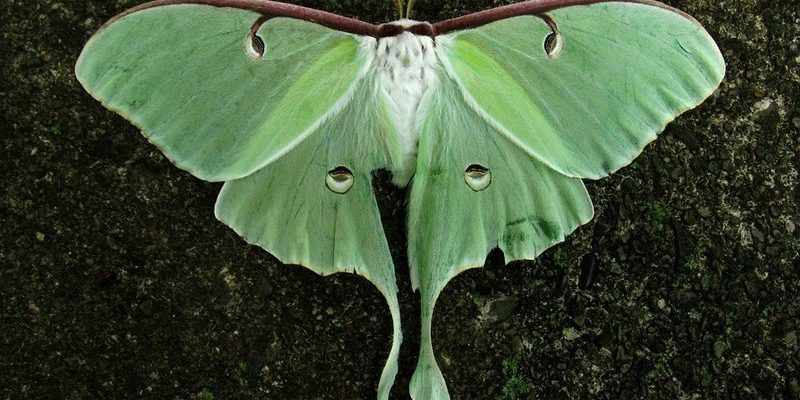
Luna moths, scientifically known as *Actias luna*, are not just pretty faces; they have a unique life cycle and behavior that scientists want to understand better. From their stunning nocturnal activities to their intricate mating rituals, there’s a lot to uncover. Studying these moths helps us grasp broader ecological concepts, including biodiversity, evolution, and environmental health. Ready to explore? Let’s get started!
Understanding the Life Cycle of the Luna Moth
The Luna moth’s life cycle is a compelling journey that begins with a tiny egg. After hatching, the larvae or caterpillars emerge, ready to feast on leaves. Typically, these caterpillars munch on the foliage of trees such as walnut, hickory, and sweetgum. Here’s the thing: they go through several stages, known as instars, before they’re ready to transform.
Once the caterpillar has eaten enough, it enters the pupal stage—think of it as a superhero going into a cocoon to prepare for its grand reveal. This transformation can take a few weeks and happens in a sheltered spot. When the moth finally emerges, it looks completely different from its caterpillar self, sporting those mesmerizing green wings. This whole life cycle is crucial for scientists to study because it reveals how Luna moths adapt to their environment.
Why the Life Cycle Matters
Studying the Luna moth’s life cycle isn’t just an academic exercise. It provides insights into how changes in the environment affect these insects. For instance, scientists can track how climate change impacts the moth’s food sources. If certain trees are dying off due to pests or pollution, Luna moths might struggle to survive. This information is invaluable for conservation efforts.
The Role of Behavior in Scientific Studies
Behavioral studies of Luna moths unveil an array of intriguing patterns that help scientists understand their ecology better. One of the most captivating aspects is their mating rituals. Males are known to be particularly drawn to pheromones released by females, which can attract them from miles away.
This courtship behavior has led researchers to explore the chemistry behind these pheromones. By isolating and analyzing these scents, scientists can gain a better understanding of how communication works among different moth species. Honestly, it’s like trying to decipher a secret language!
Why Behavioral Studies Are Important
Understanding Luna moth behavior sheds light on how they interact with their environment and each other. For example, changes in pheromone production could indicate stress due to environmental changes. Tracking these behaviors helps in assessing the health of their populations and the overall ecosystem they inhabit.
Genetic Studies and Evolutionary Insights
When scientists study the genetics of Luna moths, they’re digging deep into their evolutionary past. By examining DNA samples from different populations, researchers can trace how Luna moths have adapted over time. This helps answer questions like: How have Luna moths adapted to different habitats, and what does that mean for their future?
One fascinating area of genetic study is looking at their resistance to diseases and predators. With a changing climate and habitats evolving, understanding the genetic makeup of these moths is becoming increasingly critical.
Genetics and Conservation
Genetic studies play a vital role in conservation strategies. For instance, if a specific population of Luna moths shows vulnerability due to a lack of genetic diversity, conservationists can develop targeted strategies to boost their numbers. It’s all about ensuring the survival of these beautiful creatures for future generations.
Ecological Studies: The Bigger Picture
Ecology is about how living organisms interact with each other and their environment. Luna moths are essential components of their ecosystems, acting as pollinators and serving as food for various animals. Studying their roles helps scientists understand broader ecological dynamics.
Researchers often conduct field studies to observe Luna moths in their natural habitats. They monitor population densities, food preferences, and predator-prey relationships. These observations can highlight the health of the ecosystem. For example, if fewer Luna moths are spotted, it might indicate problems in the food web or habitat loss.
The Importance of Ecological Findings
The findings from ecological studies on Luna moths can influence conservation policies. By demonstrating how these moths impact their environment, scientists can advocate for habitat protection and restoration projects. Ultimately, it’s about preserving the intricate balance of nature.
The Impact of Climate Change on Luna Moths
As the planet warms, Luna moths, like many other species, face challenges. Changes in temperature and weather patterns can disrupt their life cycles. For instance, if spring arrives earlier, the food sources they rely on might not be ready in time for the caterpillars.
Scientists are actively studying how these shifts affect Luna moth populations. By examining historical data and current trends, researchers can predict potential outcomes and help in devising strategies to mitigate negative impacts.
Why Climate Research Is Key
Studying the effects of climate change on Luna moths is crucial for broader environmental protection efforts. By understanding how these creatures respond to changes, scientists can predict which species might be at risk, allowing for timely interventions.
Community Involvement in Luna Moth Research
You might be surprised to learn that community involvement is a significant part of Luna moth research. Citizen science projects allow everyday people to contribute to studies by observing and reporting their findings. This collaborative effort helps scientists gather more extensive data without needing extensive resources.
Community members can participate in local moth-watching events and collect data that can aid in understanding Luna moth populations. It’s a fantastic way to connect with nature while contributing to important research.
Benefits of Citizen Science
Engaging the community in scientific research fosters a greater appreciation for local biodiversity. When people feel connected to their environment and contribute to research, they’re more likely to advocate for conservation efforts. Plus, it enhances public understanding of important ecological issues.
The study of Luna moths offers a window into broader ecological challenges and successes. As researchers dive deeper into their fascinating lives, they’re unearthing insights that can help protect not just this beautiful species but also the ecosystems they inhabit.
Whether it’s understanding their life cycle, behaviors, genetics, or the impact of climate change, every piece of research builds a more extensive picture of our natural world. The Luna moth remains a vital symbol of nature’s intricacy and resilience. Who knows what new discoveries await us about these lovely creatures? It’s a thrilling journey, and we all have a part to play in preserving it.

